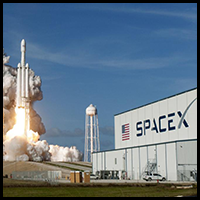A leaky component may have been to blame for the dramatic explosion of a SpaceX capsule during testing in April. No one was hurt in the ground test at Cape Canaveral but the failure was a setback in the company’s efforts to send astronauts to the International Space Station. Currently, the US buys seats for its astronauts on the Russian Soyuz rocket. NASA is planning to hand over the transport of astronauts to and from the ISS to Elon Musk’s SpaceX and Boeing. It’s doing this under something called the Commercial Crew Program. The preliminary findings of the SpaceX analysis suggest that the leaking component allowed a small amount of nitrogen tetroxide (NTO), which is used as a liquid oxidizer in spacecraft engines, to enter high pressure tubes meant for helium. On 20 April at Cape Canaveral Air Force Station, engineers were conducting something called a static fire engine test, where the spacecraft is secured to the ground and its engines are fired at full thrust. SpaceX was checking the vehicle’s propulsion systems prior to a planned test of in-flight emergency abort system. A small amount of NTO was driven at high speed through a helium check valve (one that allows gas to flow in just one direction). The check valve was made of titanium. This happened during initialization of the launch escape system – which is designed to blast the crew free in the event of a rocket failure. The reaction between titanium and NTO at high pressure was not expected. As a result of the explosion, SpaceX has already taken several actions, including the use of components called burst disks instead of check valves. The burst disks seal completely until opened by high pressure. The company believes this will prevent any liquid propellant entering the gaseous pressurization system.






